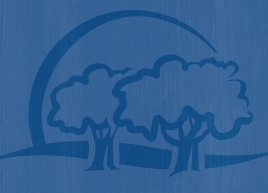
Water Quality at risk due to blue-green algae (Moncton, Dieppe and Riverview)
RIVERVIEW, NB – The City of Moncton, The City of Dieppe and the Town of Riverview advises customers that there is currently a high risk of a blue-green algae bloom in the Tower Road reservoir, which supplies water to the primary Turtle Creek reservoir. As such, all customers should immediately reduce their water consumption to required activities only, as a preventative measure to mitigate the risk of a bloom.
“At this time, the water remains safe for drinking, as well as bathing, washing and cooking. We all hope to keep it this way, which is why all non-essential water-related activities should be stopped until further notice,” explained Jack MacDonald, General Manager of Engineering and Environment the City of Moncton. “Protecting our potable water source is a community responsibility, and our collective actions can have a positive impact in this situation.”
Water conservation is expected to help reduce the risk of a blue-green algae bloom, and should a bloom occur, water conservation is expected to reduce the severity:
- As the water level in the Tower Road reservoir drops, the water temperature rises, and the concentration of nutrients rises, both of which help the bloom.
- Keeping more water in the reservoir will help keep the water deeper, cooler, and will help in keeping the nutrients and any toxins they produce as dilute as possible (meaning: less food = less algae = less toxins).
- Some examples of non-essential/wasteful water use include: washing vehicles, watering lawns/gardens (collect rainwater in barrels instead), letting tap water run while brushing teeth or shaving, washing only partial loads of laundry and dishes, hosing down a driveway.
What’s different this year, compared to 2017[1]?
Similar to 2017, the weather patterns in Atlantic Canada have been unusually dry in 2020, and the reservoir levels are currently 4-6 weeks ‘ahead of schedule’, meaning that the current levels are typically only reached in September, when the rainy fall season is soon arriving.
In addition, with the exceptionally high temperatures experienced in our region for sustained periods, the reservoir water temperatures are approximately 4 degrees warmer than the average, currently at 25o.
Both factors are contributing to the increased risk of a serious bloom.
Is the water still safe for consumption?
Yes, until further notice, water remains safe for drinking and all other regular activities such as bathing, cooking and washing.
Water sampling and testing are continuing; our primary reservoir at Turtle Creek is in good condition at this time. Plans are in place to ensure the highest standards of water quality are maintained.
All customers will be notified should treated water quality become compromised with an associated public health risk.
What is blue-green algae?
Blue-green algae are naturally occurring microscopic organisms found in both fresh and salt water. Under conditions such as warm water temperatures, high nutrient loads, and other influences, blue-green algae can multiply quickly and create blooms. These blooms can sometimes produce harmful toxins. Blooms can occur at any time of year, but are more common in summer or early fall.
Background:
- The Turtle Creek reservoir has been the tri-community’s primary drinking water supply since 1962, and has a capacity of about 7 billion litres.
- The Tower Road reservoir, opened in 2014, supplies the Turtle Creek reservoir and provides an additional 10 billion litres of drinking water supply to the communities of Moncton, Dieppe and Riverview.
- Upgrades to the water treatment plant began in 2019; Phase 1 is expected to be completed by year-end.
Additional resources:
City of Moncton:
www.moncton.ca/waterconservation
Government of NB: https://www2.gnb.ca/content/gnb/en/departments/ocmoh/healthy_environments/content/blue_green_algae.html
[1] The region’s first major blue-green algae bloom occurred in 2017; many actions have been launched to mitigate future blooms. See backgrounder for details.
